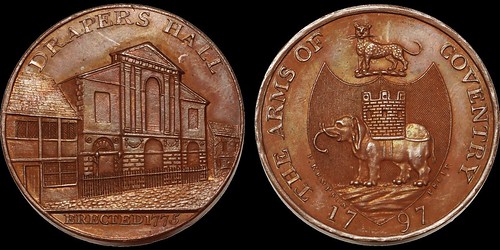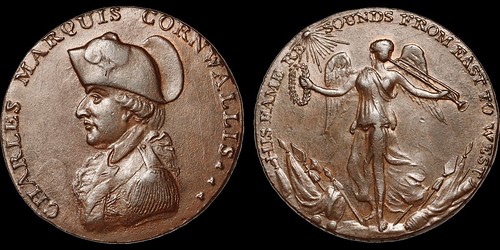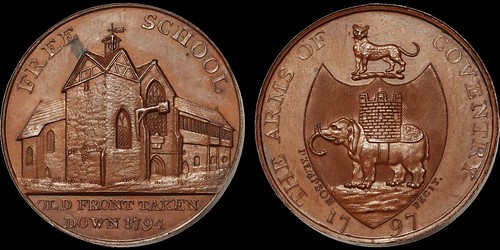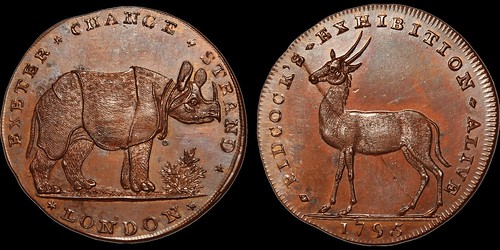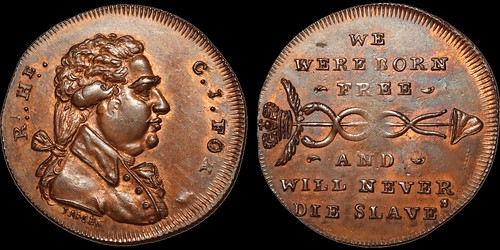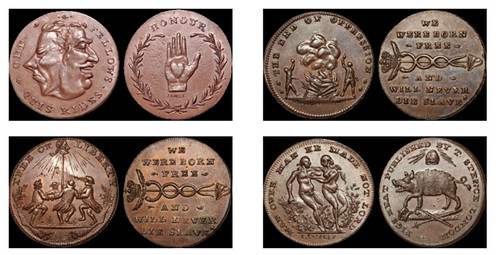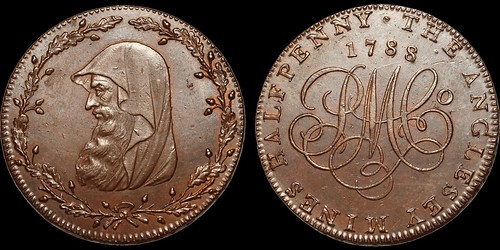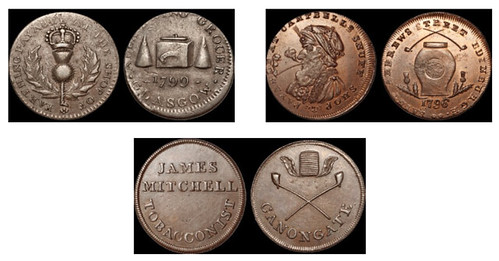
PREV ARTICLE
NEXT ARTICLE
FULL ISSUE
PREV FULL ISSUE
V25 2022 INDEX E-SYLUM ARCHIVE DAVISSON'S E-AUCTION 45 TOKENSAllan Davisson also penned an article about some of the great British trade tokens in Davisson's E-Auction 45. -Editor
British trade tokens are the story of the need for small change in daily life when the government was unable or unwilling to provide an
The governments of the era simply did not issue small change. Until 1696 there was the additional problem of hammered silver lacking full value because of all the clipping of pieces in circulation. Political instability was a major reason. The Civil War disrupted life. The reigns of the sons of Charles I—Charles II and James II—dealt with the turmoil after Commonwealth rule fell apart after the death of Cromwell. Then the British tokens are a regular feature of our catalogs. My involvement with them goes back to the time when we (Marnie and I) were just beginning to build a numismatics-based business. We attended local and regional coin shows and published fixed-price lists (with no photos). I first saw these copper pieces about the size of a US large cent in boxes that an older part-time coin dealer had on his table at a coin show. For a couple of dollars each I could buy coppers from the American colonial era that came from England and featured wide-ranging designs. Early on, I responded to an ad run by someone whose name I had seen in coin newspapers offering a dozen (or so, as I recall) uncirculated examples of these pieces for something on the order of $100 or $125. When the parcel arrived, there were more pieces than promised, all of which were pretty close to Uncirculated, along with a note that the extras were because he could not provide as many choice pieces as he had advertised. That was my first transaction with David Bowers. Our offering of British trade tokens in this catalog includes some marvelous pieces from Baldwin's basement I came upon while researching my update of Dalton & Hamer in the 1980's, and others from the iconic Jim Noble Sale I attended in Melbourne in 1998. Provenances of former owners include Cokayne and Richard Doty, former curator at the Smithsonian. A marvelous Pidcock piece picturing a rhinoceros and an antelope is followed by some Spence tokens that show his influence on the architects of the American Revolution and their fight for freedom and independence across the ocean. Next follows a lovely group of classic tokens from Wales featuring the iconic Druid's head. And some classic tokens from Scotland. A small but satisfying listing with some gems included. Take a look before the sale closes on Wednesday and these modest mementos of the turbulent late 18th century go to their next owners.
To read the complete auction British Tokens section, see:
For more information, see:
To read the earlier E-Sylum article, see:
Wayne Homren, Editor The Numismatic Bibliomania Society is a non-profit organization promoting numismatic literature. See our web site at coinbooks.org. To submit items for publication in The E-Sylum, write to the Editor at this address: whomren@gmail.com To subscribe go to: https://my.binhost.com/lists/listinfo/esylum All Rights Reserved. NBS Home Page Contact the NBS webmaster 
|
